Chaparral: Beyond Normal.
Introduction
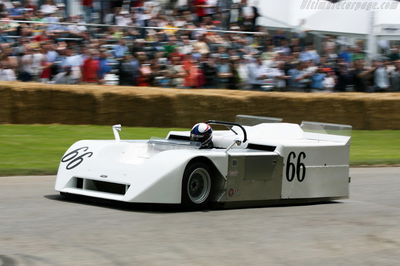
Introduction

Normal. Adjective. Conforming to a standard, usual, typical, or expected. Example: It is normal for fast cars to have an aluminium engine block, automatic gearbox, active aerodynamics, lightweight composite wheels and on-board telemetry. But a fast car, or even a race car is not considered normal when it contains vacuum powered down force which is internally generated which eliminates the requirement for wings, or a race car powered by a high-revving fan to race in the Indy 500.
Meet Chaparral, the race engineering company that re-defines what is considered normal with every innovation they made. Some of their innovations are implemented into most cars today such as active aerodynamics, an automatic gearbox, an aluminium engine block, lightweight composite wheels and on-board telemetry, just like the example I gave above.
But all of their innovations were considered ahead of it’s time when they were all fully developed and used. Even until today, some of their innovations were never considered normal despite being decades old and were not implemented in cars today, such as vacuum-powered internal down force and a fan powered, or even air powered car, and the technologies and time to legalize those for road use could take decades.
The Chaparral 1
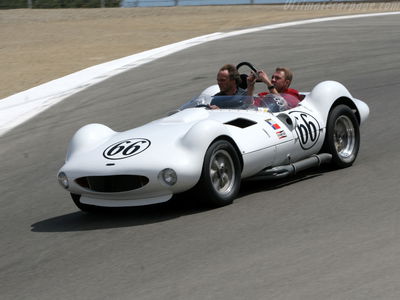
In 1957, Troutman and Barnes built the Chaparral 1. It had the looks of a Shelby Cobra, and was made for track-only purposes. It was their first race car. Not much was known about Troutman and Barnes since, or how the car was used. A customer named Jim Hall purchased two of the Chaparral 1 to be used on the racetrack, who would soon be a legend in the racing world.
Jim Hall was the motivating force of Chaparral Racing, together with Hap Sharp. They were the founding brothers of the company. Based in his hometown of Midland, Texas, they both built race cars and participated in some notable races, such as the United States Road Racing Championship, and the Can-Am Cup.
Their first car, the Chaparral 1, was used in some races. It was heavily modified beforehand. Not much was known about what they won, what races they participated in, etc. But the cars Hall and Sharp that they built afterwards will change the face of racing forever.
The Chaparral 2A and 2B

In 1958, one year after their foundation, Chaparral and Chevrolet formed a partnership together. On the same year, the Chaparral 2 Series was born, starting with the Chaparral 2A, based on the Chevrolet Corvette GS-II Research Vehicle. It featured fiberglass for a chassis material, a first of its kind. It was an advantage to the car, which made it’s overall weight lighter.
In 1963, it was raced for the very first time. It was the developed into a dominating car for the Can Am series in 1966 and 1967, one of the most prestigious endurance races in the world, which could stretch for as long as 200 miles. But two years ago, it’s crowning achievement was earned. The 2A raced and won the 12 Hours of Sebring, one of the roughest tracks in the North America, under horrible weather condition and pouring rains.
As time went on, the Chaparral 2A was evolved into the Chaparral 2B. Not much has changed from the car besides some new parts put onto it. It still retained the fiberglass chassis that was featured on the Chaparral 2A. But the 2C will feature the most groundbreaking innovation used in the automotive world.
The Chaparral 2C, 2D and 2E
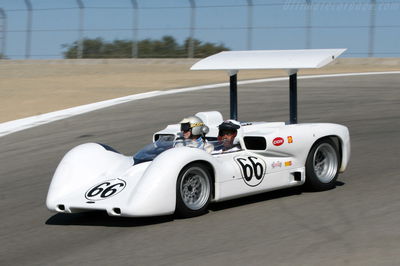
The Chaparral 2C was the first car in the world to feature an adjustable rear wing. It was designed to lie flat for low drag on straight racetracks and raise up when cornering. It was based on a Chevrolet Aluminium chassis, which gave the 2C an overall smaller size compared to the 2B and the 2A. Alongside the development of aerodynamics was Hall’s development of race tires. Jim Hall owned Rattlesnake Raceway adjacent to his race shop, which allowed him to develop and test new tires on his race cars.
The 2D was the first closed cockpit variant of the 2-series, designed for endurance racing in 1966. It won the 1000 kilometers of Nürburgring in 1966 with Phil Hill and Joakim Bonnier driving. It also competed in the 1966 24 Hours of Le Mans, withdrawing after 111 laps. The Chaparral 2D was equipped with an aluminum alloy Chevrolet engine combined with an automatic gearbox, another world first, producing 420 horsepower, and the car weighed only 924 kg.
Meanwhile, the 2D evolved into the 2E, still based on the 2D, which would revolutionize racing altogether. It looked great, and screamed function and form. The wing evolved, featuring a curved shape the opposite of an aircraft wing. The wing also could not just go up and down, it could also flatten and lift to reduce drag with the push of a pedal, which is featured in most super cars and hyper cars today. In addition, an interconnected air dam closed off the nose ducting for streamlining as well.
The Chaparral 2J
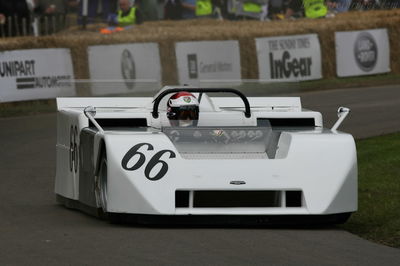
The 2J was the most unusual car to come out of the racing world. It’s also the strangest hybrid car, not powered by an engine and electric motors, but by an engine paired together with two fans. On the chassis’ sides bottom edges were articulated plastic skirts that sealed against the ground, a technology that would later appear in F1. In it’s rear, two fans sourced from a military tank engine powered by a two-stroke, two cylinder engine. Inside it, it contained a vacuum that could create artificial down force of up to 1.5 G, one and a half times the force of gravity, eliminating the need for aerodynamic parts.
The 2J competed in the Can-Am series and qualified at least two seconds quicker than the next fastest car, but was not a success as it was plagued with mechanical problems. It ran for only one season, in 1970, after which it was outlawed by the Sports Car Club of America. There were also complaints from other drivers saying that whenever they drove behind it the fans would suck in and throw stones at their cars. McLaren argued that if the 2J were not outlawed, it would likely kill Can-Am racing because it was too good, which instantly meant that it was a legendary car. Only four cars were banned for being too good so far, the Chaparral 2J, the Mazda 787B, the BMW M3 GTR, and the newly released Dodge Challenger Demon.
Chaparral released their next Indy Car to replace the 2J, because it was banned, called the 2K. The 2K was a Formula One-inspired ground effect Indy car designed by John Barnard. It went on to win six races in 27 starts over three seasons. Its greatest success came in 1980, when Johnny Rutherford won both the Indy 500 and the CART championship.
Chaparral Today
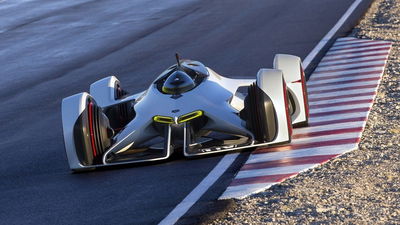
Sadly, Chaparral Racing’s glory didn’t last so long. Jim Hall abandoned the company, and he would later turn to using off-the-shelf race cars to race in his Indy car team which was renamed “Jim Hall Racing” until 1996, when he retired from racing altogether. Chaparral didn’t survive long after.
But in 2014, Chevrolet designed and developed an in-game car in Gran Turismo 6 which re-defined the power source of a car in homage to Chaparral. It was designed as a preview of the future of Motorsport and is inspired by the combined sensations of flying in a wing suit and a riding a Moto GP race bike. The 2X’s Chevrolet power unit is unlike anything seen on the track before. It’s laser powered. It literally thrusts itself down the track with laser pulse shock waves generated by an advanced propulsion system from Chevrolet.
It was not controlled by a steering wheel, its powered by your body. You literally slip into the car lying down, and leaning your body which controls the car’s steering, just like in a wingsuit, and pushing your hand into a pedal which accelerates it. Because of the car’s absurd source of power, Gran Turismo had to re-research and apply new physics to this car, because it was laser powered.
You could play this car on Gran Turismo 6 right now. But only time will tell if the technology is available to create this car in real life, adding laser-powered cars to the list of Chaparral’s revolutions despite being defunct.
In Conclusion
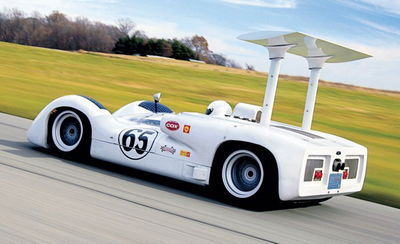
Chaparral might be dead, but it’s legacy still lives on. It’s innovations were once considered groundbreaking and weird, but now, you could find them in most super cars and race cars today. Active aerodynamics, lightweight materials and even an automatic transmission, from the racetrack to our everyday cars on the road.
Now all we need to wait for is the fan powered car…

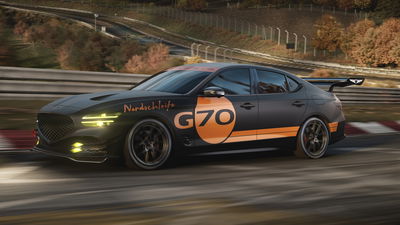












Comments
Chaparrals are insane. I love them. The 2J was the most awesome car in my Gran Turismo 4 garage!
Yep. Legendary car.
Yeeeesss The 2j and 2d were awesome ;) It was so cool to be able to drive something so different :)
It’s a pity there is now little room for innovation in racing. Only recent one I can think of was Nissan’s LMP1 effort - a 1250hp flywheel hybrid that was front wheel drive in order to allow a larger rear diffuser. We need more crazy stories like these.
The GT-R LM. Sadly it never made it on the racetrack.
I agree, the problem is that the FIA had “destroyed” some interesting project because of the restrictions. Some Projects were so great! It could give birth to some great new racecars and race series
I remember getting up close to the LMP1 at the Chicago auto show a couple years back. The thing is mental
Nice post! But I’m not sure I understand the addition of the demon, it isn’t a race car.
Its also banned for being too good just like the other three.
wasn’t the audi 90 quattro gto also banned due to the 4wd system for being too good?
Yeah. You can add that to the list.
Jup. Just like its 200 Trans Am sister, the V8 DTM and the A4 quattro BTCC…
Audi’s were banned a lot, is what I’m saying here.
Great post! Although you missed the impossibly weird 2H:
Kinda like the embodiment of the big wang.
Why is the wing in the middle?
Ahh the 2J, the hardest car to beat on gran turismo games..
Ahh, the Chaparral or “that f-king car I could never win against because God Kniws how on earth it corners and accelerates so quickly”
Actually, “that f-king car I could never win against because it threw dirt at my face continuously”
The 2A is beautiful…and the NC MX-5 now has a smiling competition with the Chaparral 1. Imagine Chaparral did road cars with this tech…anyway, fantastic post!
can You tell about the prices of these racing cars? I want to buy.
http://www.gari.pk
WE.NEED.CHAPARRAL.BACK!
Pagination